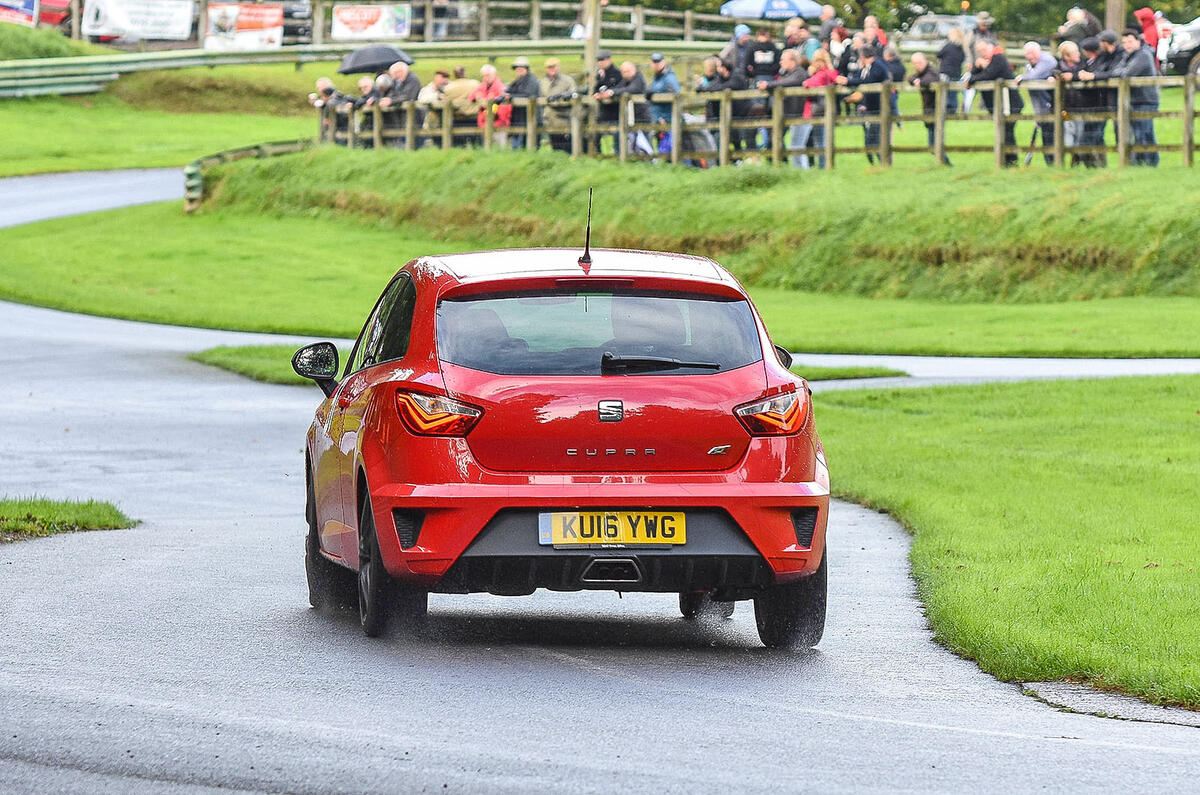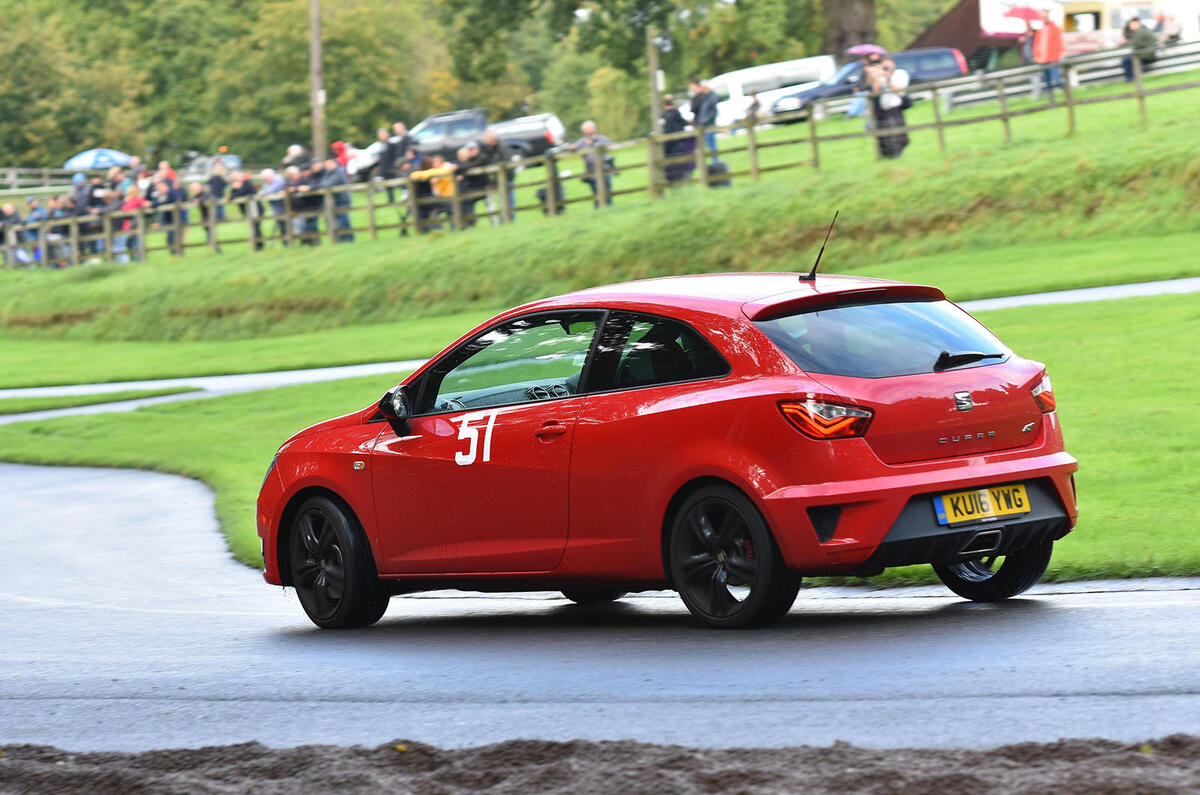In Britain, one of the easiest – and certainly one of the most traditional – ways to start competing in motorsport is by doing hillclimbs.
With no need for a race licence and a huge variety of categories in which to compete, everyone from beginners to professionals can regularly take part, driving anything from completely standard road cars to F1-engined single-seaters.
The UK has more than 25 established hillclimb clubs scattered across the country, with some of the most popular including Shelsley Walsh, Harewood and Prescott. To get a flavour of this incredibly old but still very popular form of motorsport, we entered our Seat Ibiza Cupra long-termer into an autumn hillclimb at Prescott in Gloucestershire.

No race licence
Because hillclimbs send cars up a hill one at a time, you don’t need to take a Motor Sports Association (MSA) race licence test in order to get started. Instead, you can purchase a non-race National B licence for £43, and in most cases you won’t even need to take a medical.
Hillclimb entries are by invite only, which means you have to be a member of a club that gets invited to events in order to enter. We joined the Bugatti Owners Club – don’t be fooled by its name, anyone can join – which is based at Prescott. Full membership is £76 for the year, and entry to a Prescott event costs £110.
Low cost
If you really want to compete on a budget, there’s nothing stopping you from turning up in a few grands’ worth of used hatchback and heading up the hill. If a car is completely unmodified, scrutineers are only interested in ensuring the car is safe and roadworthy.































Join the debate
Add your comment
I'd say a new set of tyres
Easy on the wallet?
£300 for 4 go's up a hill
What does the insurance actually cover you for? And if you don't have it are you liable for hitting say a telegraph pole etc?